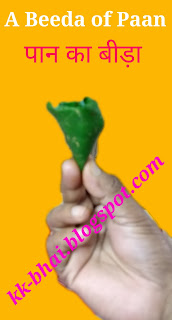||ॐ||
 |
| Puja Asana/Puja Aasani/Puja Mat |
While doing the daily Pujan a devotee must sit on an Aasana. There are many types of Aasana for Puja but the best recommended by the religious books is the one made of Kusha or Darbha. It is called as Kushaasana or Darbhasana. Kusha is a type of grass which is known as Halfa Grass in English. It is treated as a holy grass in Hindu religion and there are some rituals to be performed before uprooting it. (Click here to read about the Kusha Grass). Dried Kusha grass is woven to make a mat which is Kushasana. It is said that doing Puja (worshipping gods) by sitting on the Kushaasana is fruitful.
Woolen Aasana (Blanket -कम्बल) is another type of Aasana which is recommended for Puja. In fact, it is the Aasana which is commonly used in Hindu household. While Kushaasana is thin, the woolen Aasana is somewhat soft and sitting on it more comfortable than the former. It is said that using this Aasana brings peace and wealth to the devotee's house. Some astrologers specify different colors for the this Aasana to fulfill different desires.
Aasana of cotton is not recommended but that of silk (Resham -रेशम) is allowed especially in Vishnu Puja.
Wooden Aasana is not allowed in daily Pujan but it is used in some special Pujan on occasions like "Upanayana" or "Janeu". It is made of Mango wood and named as Peedha (पीढ़ा).
There are other Aasanas which are skins of animals like a deer or tiger but these are not used inside a house or temples. It is also not suitable to present time (देश और काल) as the wild animals are on the verge of extinction and Govt ban it. When the religious holy books were written the earth was full of forest and animals. At that time Mrigaasana (Aasana of deer's skin) and Vyaghraasan (Aasana of tiger's skin) were used by Rishi and Muni in the Jungle. Tiger's skin used to keep the wild animals away thus the Saadhak could go in Dhyana undisturbed.
The shape of an Aasana should be square. It is kept on the cleaned ground and before starting the worship it is made "Shuddha" (Pure) by holy water and Mantras. After the Puja is completed it is given a Pranam then it is lifted and kept at its place.
It is also to be noted that a devotee should use his own Aasana for the worship. The same Aasana should not be used by different devotees as is the case with Japmala.
When gods are invoked they are also offered Aasana. For them, Akshat is put on the ground as Aasana. Some Mantras are also spoken. One of the Mantras is like this:-
Tadapi Bhaktjanam Khalu Vikshya Maan Samuchitam Priymaasanmaasyataam)
Puja Aasanas are also available online at Amazon.
Woolen Aasana (Blanket -कम्बल) is another type of Aasana which is recommended for Puja. In fact, it is the Aasana which is commonly used in Hindu household. While Kushaasana is thin, the woolen Aasana is somewhat soft and sitting on it more comfortable than the former. It is said that using this Aasana brings peace and wealth to the devotee's house. Some astrologers specify different colors for the this Aasana to fulfill different desires.
Aasana of cotton is not recommended but that of silk (Resham -रेशम) is allowed especially in Vishnu Puja.
Wooden Aasana is not allowed in daily Pujan but it is used in some special Pujan on occasions like "Upanayana" or "Janeu". It is made of Mango wood and named as Peedha (पीढ़ा).
There are other Aasanas which are skins of animals like a deer or tiger but these are not used inside a house or temples. It is also not suitable to present time (देश और काल) as the wild animals are on the verge of extinction and Govt ban it. When the religious holy books were written the earth was full of forest and animals. At that time Mrigaasana (Aasana of deer's skin) and Vyaghraasan (Aasana of tiger's skin) were used by Rishi and Muni in the Jungle. Tiger's skin used to keep the wild animals away thus the Saadhak could go in Dhyana undisturbed.
The shape of an Aasana should be square. It is kept on the cleaned ground and before starting the worship it is made "Shuddha" (Pure) by holy water and Mantras. After the Puja is completed it is given a Pranam then it is lifted and kept at its place.
It is also to be noted that a devotee should use his own Aasana for the worship. The same Aasana should not be used by different devotees as is the case with Japmala.
When gods are invoked they are also offered Aasana. For them, Akshat is put on the ground as Aasana. Some Mantras are also spoken. One of the Mantras is like this:-
अयि विभो शरणागतवत्सल यदपि हीनमिदं भवतां कृते।
तदपि भक्तजनं खलु वीक्ष्य मां समुचितं प्रियमासनमास्यताम྄।(Ayi Vibho Sharanagatvatsala Yadapi Heenmidam Bhawatam Krite
Tadapi Bhaktjanam Khalu Vikshya Maan Samuchitam Priymaasanmaasyataam)
Puja Aasanas are also available online at Amazon.
==<<<O>>>===




